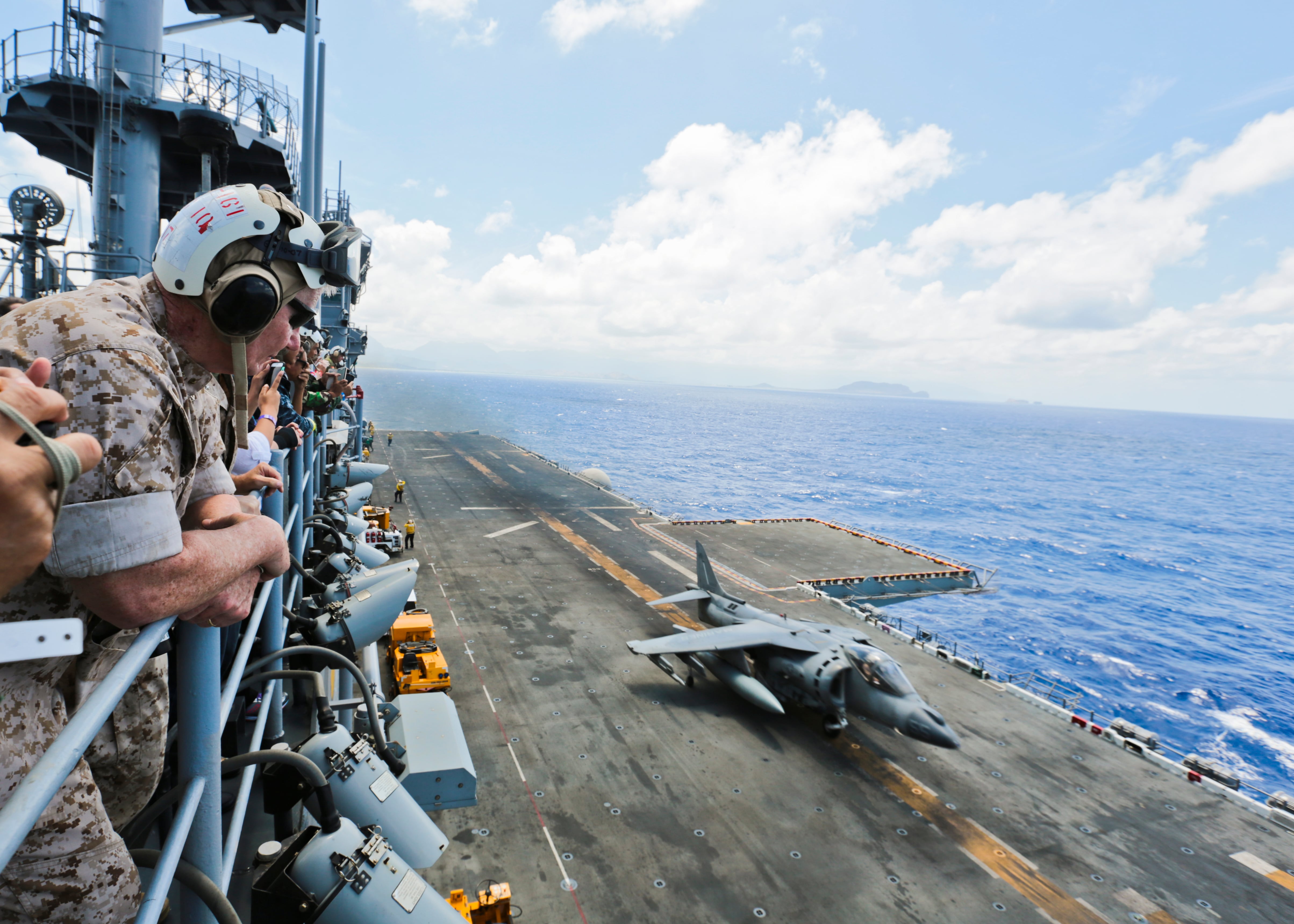The Navy plans to pull its carrier presence out of the Middle East temporarily this fall, which will sideline the Navy's premier airstrike platform for the first time since the outbreak of Operation Inherent Resolve.
The break in presence will likely last from one to two months after the carrier Theodore Roosevelt departs U.S. Central Command this fall. She'll Theodore Roosevelt will be replaced by Truman and its her escorts in 5th Fleet early later on this winter, according to Navy officials who spoke on background to discuss future operations.
The break in carrier presence in the middle of a fight with the Islamic State group is a setback, but Navy officials say it's a consequence of now years of strain placed on the fleet by increasing demands and decreasing budgets.
The gap in carrier presence in 5th Fleet, if it materializes, is a strong indication that Navy leaders are following through on their commitment to scale back marathon deployment lengths that have taken a heavy toll on morale and on the material condition of its ships.
"The increased frequency and extension of carrier strike group deployments increased wear on the force, which led to increased maintenance and repair requirements and lengthened maintenance availability periods," said Navy spokesman Cmdr. William Marks.
"As a result of meeting increased [combatant commander] demand in previous years, sequestration's impact on our shipyards, and having a force structure of 10 (rather than 11) carriers, the Navy is not scheduled to provide a continuous carrier presence in some operating regions in fiscal year 2016."
The gap in presence is not a done deal, and Theodore Roosevelt could still be extended if requested by Central Command and approved by Defense Secretary Ash Carter. But leaders including Chief of Naval Operations Adm. Jon Greenert have been vocal about the need to get deployments back to a sustainable length.
Since 2011, the Navy has seen ever-longer deployments, some more than 10 months. The Navy partially blames the onerous deployments on having to provide two carriers at all times in the Persian Gulf between 2011 and 2013. The requirement forced the service to extend deployments while critical maintenance was performed on stateside carriers and escort ships back stateside.

Marine Lt. Gen. John A. Toolan, commander, U.S. Marine Corps Forces, Pacific, watches an AV-8B Harrier take off from the USS Essex. The amphibious assault ship is to arrive in the Middle East in weeks, and will be there through the end of the year.
Photo Credit: Lance Cpl. Wesley Timm/Navy
The second big hit to deployment lengths was work stoppages in the public shipyards, the result of furloughs after the first round of across-the-board budget cuts, known as sequestration, called sequestration in 2013. That set already strained maintenance schedules even further behind.
The Navy's top officer told Navy Times in March that even with another round of cuts pending, the Navy had no choice but to get back on track.
"It is not my plan to go back to long deployments," Greenert said in the exclusive March 24 interview. "It is not my intent to go back to eight- or nine-month deployments: I believe they are unsustainable."
A Navy official who spoke on background said Navy leaders have said repeatedly that the heavy demands placed on the fleet would impact its ability to provide presence down the road. The service projects that it will take until about 2020 to get back on track with its normal presence schedule, and that it will likely be necessary to gap presence again while the service resets, the official said.
Still, the Navy will not be leaving Central Command barren. The Essex Amphibious Ready Group, with its Harriers, is deployed and will likely be in Central Command through most of the rest of the year. In the meantime, the Air Force's land-based fighters will pick up the slack in Operation Inherent Resolve for the missing carrier air wing.
Jerry Hendrix, a retired captain and analyst with the Center for a New American Security, said the plan to gap CENTCOM is a sign the Navy is serious about getting its deployments shorter, but said the forces remaining in CENTCOM can cover for the lack of a super carrier.
"The Navy is trying to remain true to its commitment to bring deployment lengths down," Hendrix said. "But it also shows that the Navy recognizes the utility of its force. The [landing helicopter dock] is a highly capable platform, it has helos and Harriers on board, and it will be enough to meet the immediate tactical requirements of the area."
David B. Larter was the naval warfare reporter for Defense News.




